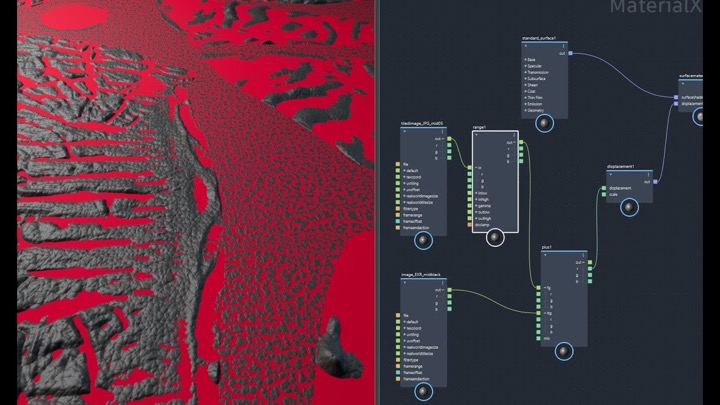This is pretty cool, as I was just figuring this out the other day – what do you do when you have transparency textures and you want to do an ambient occlusion from the scene… Ashraf Aiad shows us exactly what to do with a quick Autodesk Maya tutorial on building ambient occlusions when your textures have transparencies associated.
mayamaya rendering tutorialsmaya tutorials
maya tutorial, ambient occlusion with transparency texture
lesterbanks
3D, VFX, design, and typography. Twenty year veteran instructor in all things computer graphics.
Related Posts
 mayaMaya Animation Tutorialsmaya tutorials
A Complete Guide to Walk Cycle Animation
mayaMaya Animation Tutorialsmaya tutorials
A Complete Guide to Walk Cycle Animation
A Complete Guide to Walk Cycle Animation
lesterbanksApril 30, 2024
 mayamaya tutorials
How to Mix Two Displacement Maps With Maya MaterialX Graph
mayamaya tutorials
How to Mix Two Displacement Maps With Maya MaterialX Graph
How to Mix Two Displacement Maps With Maya MaterialX Graph
lesterbanksApril 26, 2024
 lookdexXmaya
An Introduction to MaterialX Data Model in Maya LookdevX
lookdexXmaya
An Introduction to MaterialX Data Model in Maya LookdevX
An Introduction to MaterialX Data Model in Maya LookdevX
lesterbanksApril 11, 2024


if you are using ambient occlusion as a render pass for compositing, this would still be an incorrect way to use ambient occlusion. Note that in the example render there is a light in the upper right corner, yet the AO pass is just as dark on the lit side as the the non lit areas.
http://mentalraytips.blogspot.com/2008/11/joy-of-little-ambience.html
I see what you are saying, and you are right! I think the “take away” from Ashman’s tutorial was more meant for the shader itself and not so much the AO process though! – lesta.
True. I just find it odd that in just about every AO tutorial – be it using 3d software or in post, setting up the shader, rendering, etc – no one ever seems to mention that using a global occlusion pass is wrong.
thats a great opportunity for a tutorial! It is our responsibility to teach so crap doesn’t get passed down as habits… especially someone as talented as you dood. tutorial!